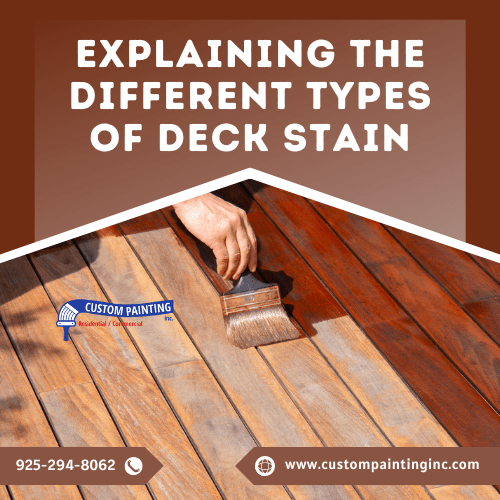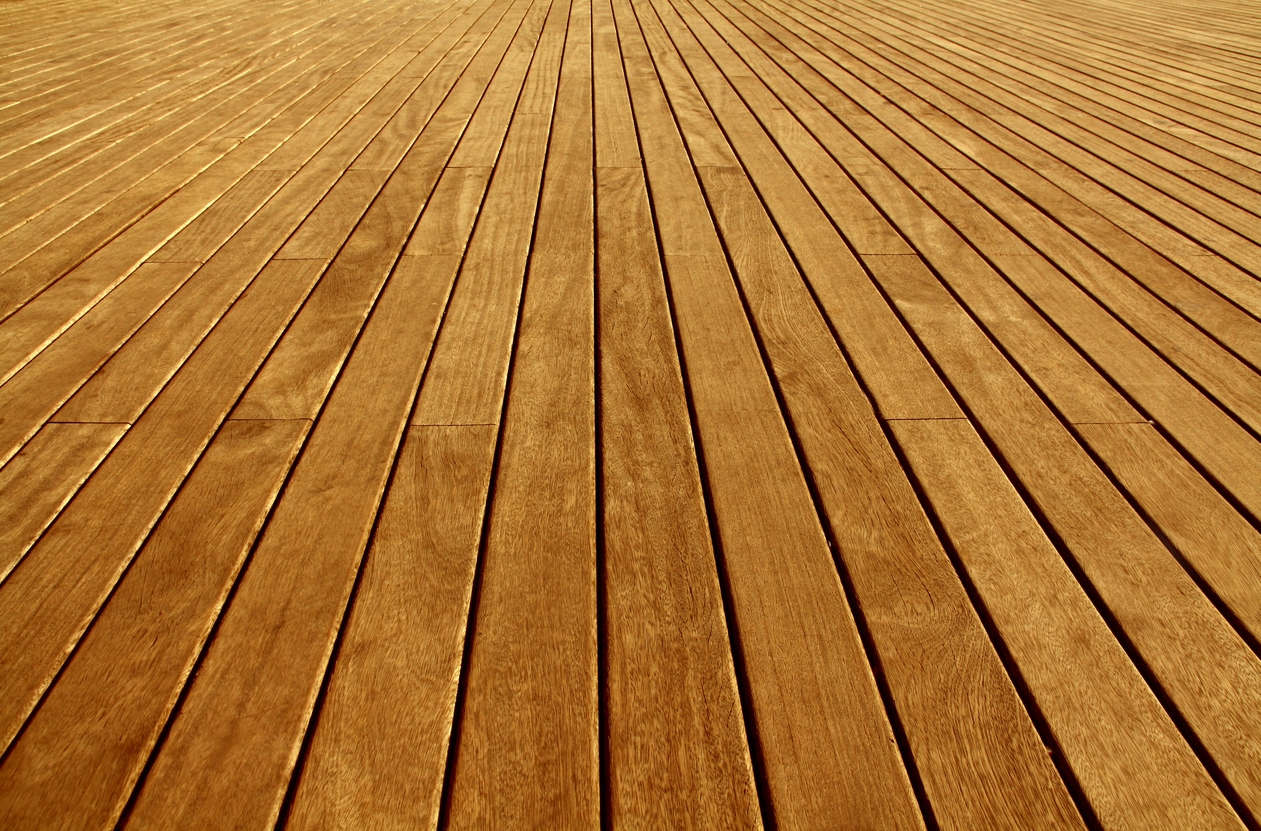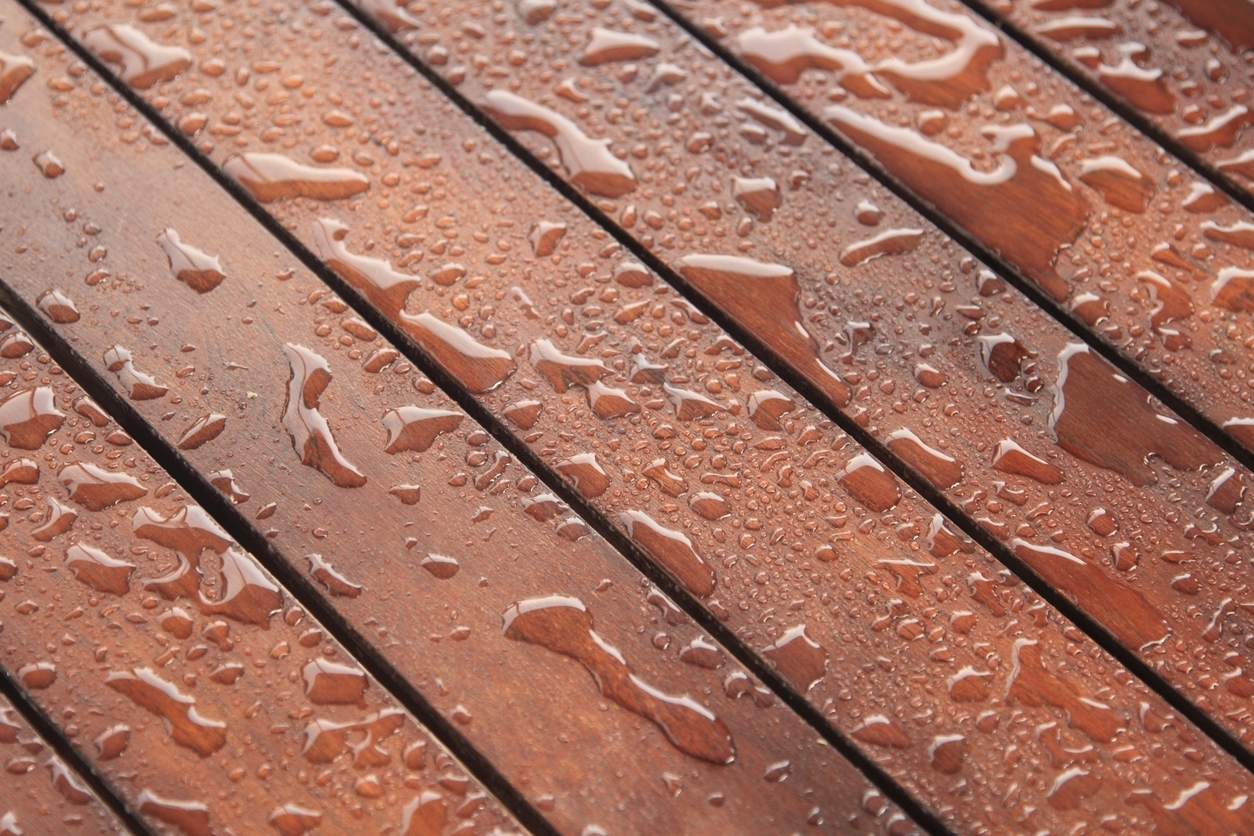When it comes to maintaining your Mountain House area home’s deck, choosing the right stain can make all the difference. With so many options available, it can be challenging to know which type of deck stain is best for your needs. In this article, we’ll break down the different types of deck stains, explaining their unique characteristics and benefits so you can make an informed decision and keep your deck looking great for years to come.
Transparent Deck Stains
Transparent deck stains are a popular choice for homeowners who want to protect their wood deck while maintaining its natural appearance. These stains offer a subtle, clear finish that allows the wood’s natural grain, color, and texture to shine through.
Definition and Characteristics of Transparent Stains
Transparent deck stains are designed to penetrate the wood and provide a protective layer without adding color or altering the wood’s appearance significantly. They contain a minimal amount of pigmentation, which means they offer only a slight tint, if any, while still providing essential protection against moisture, UV rays, and mildew. The result is a natural-looking deck that appears untreated but is safeguarded against the elements.
Ideal Uses and Benefits
Transparent stains are ideal for decks made from high-quality wood, such as cedar, redwood, or teak, where the natural beauty of the wood is a primary feature. Here are some of the key benefits of using transparent deck stains:
- Showcasing Natural Wood Grain and Texture: One of the main advantages of transparent stains is their ability to enhance the wood’s natural beauty. They highlight the wood’s grain and texture, making them an excellent choice for those who want to preserve the organic look of their deck.
- Minimal Change in Appearance: Since transparent stains do not significantly alter the color of the wood, they are perfect for those who prefer a natural, rustic look.
- UV and Moisture Protection: Despite their clear appearance, transparent stains still offer protection against harmful UV rays and moisture, helping to prevent wood from graying, cracking, and warping.
Considerations for Application and Maintenance
While transparent deck stains offer many benefits, there are some factors to consider before application:
- Wood Preparation: The wood surface must be clean, dry, and free of any old finishes or debris before applying a transparent stain. Proper preparation is crucial to ensure the stain penetrates the wood effectively.
- Frequent Reapplication: Transparent stains typically require more frequent reapplication compared to more opaque stains. The lack of heavy pigmentation means they may wear off more quickly, especially in areas exposed to harsh weather or heavy foot traffic.
- Limited Color Options: Since the primary goal of a transparent stain is to maintain the wood’s natural look, there are limited color options available. If you’re looking for a stain that adds a significant tint or color, transparent stains may not be the best choice.
Semi-Transparent Deck Stains
Semi-transparent deck stains are a versatile option for those who want to protect their deck while adding a hint of color. These stains offer a balance between showcasing the wood’s natural beauty and providing additional pigmentation to enhance or alter the wood’s appearance slightly.
Description and Features of Semi-Transparent Stains
Semi-transparent deck stains are designed to penetrate the wood while leaving a subtle tint that enhances the wood’s natural grain and texture. Unlike transparent stains, semi-transparent stains contain more pigment, which helps to slightly alter the color of the wood while still allowing the natural grain to be visible. This type of stain provides a more substantial barrier against the elements compared to transparent stains, making it a popular choice for those looking for both protection and aesthetic appeal.
Key features of semi-transparent stains include:
- Subtle Tinting: Adds a touch of color to the wood, enhancing its appearance without completely covering the natural grain.
- Enhanced Protection: The added pigment helps protect the wood from UV rays, reducing the risk of graying and sun damage.
- Versatility: Available in a variety of colors, allowing for customization while still maintaining a natural look.
Advantages: Balance Between Wood Visibility and Added Color
One of the main advantages of semi-transparent stains is their ability to strike a balance between the visibility of the wood and the addition of color. Here’s why semi-transparent stains are a favored choice:
- Enhances Natural Beauty: Semi-transparent stains enhance the wood’s natural beauty by adding a subtle color that highlights the grain rather than hiding it. This is perfect for those who want to complement the wood’s natural characteristics while adding a touch of color.
- Improved Longevity: The increased pigment in semi-transparent stains provides better protection against UV rays and moisture, which can extend the life of the wood and reduce the need for frequent maintenance.
- Customization: With a range of colors available, semi-transparent stains allow homeowners to choose a hue that complements their home or landscape while still maintaining a natural appearance.
Suitable Wood Types and Environmental Conditions
Semi-transparent stains are suitable for a wide range of wood types and environmental conditions. Here’s what to consider:
- Wood Types: Semi-transparent stains work well on most wood types, including cedar, redwood, and pressure-treated lumber. They are particularly effective on decks with older or slightly weathered wood, where the stain can help rejuvenate the appearance while still showcasing the wood’s natural grain.
- Environmental Conditions: These stains are well-suited for decks exposed to moderate weather conditions. The added pigment offers better protection against UV rays and moisture, making them ideal for areas with a mix of sun and shade. However, in extreme conditions, such as constant direct sunlight or high humidity, more frequent reapplication may be necessary.
Semi-Sold Deck Stains
Semi-solid deck stains are a great option for those who want more color coverage while still allowing some of the wood’s natural grain to show through. These stains strike a balance between the subtle tint of semi-transparent stains and the full coverage of solid stains, offering both aesthetic appeal and durable protection.
Explanation of Semi-Solid Stains and Their Opacity
Semi-solid deck stains are designed to provide a higher level of pigmentation compared to semi-transparent stains, resulting in a richer color and greater opacity. While they allow some of the wood’s natural texture and grain to remain visible, the color coverage is more pronounced, creating a more uniform appearance. This makes semi-solid stains an excellent choice for decks that have minor imperfections or uneven coloration, as the increased opacity helps to mask these flaws.
Key characteristics of semi-solid stains include:
- Higher Pigmentation: Provides more color coverage, resulting in a richer and more uniform appearance.
- Moderate Opacity: Offers a balance between revealing the wood’s natural grain and achieving a more solid color finish.
- Enhanced Durability: The higher pigment content adds an extra layer of protection against UV rays, moisture, and wear.
Benefits: More Color Coverage While Highlighting Some Wood Grain
Semi-solid deck stains offer several benefits, particularly for those looking for a compromise between full-color coverage and maintaining some of the wood’s natural character:
- Richer Color: With semi-solid stains, you can achieve a deeper, more vibrant color on your deck while still allowing some of the wood grain to peek through. This is ideal for those who want to make a bolder statement with their deck color while retaining a hint of the natural wood look.
- Covers Imperfections: Semi-solid stains are particularly effective at covering minor imperfections in the wood, such as uneven coloration, stains, or small cracks. This makes them a great option for older decks that need a bit of rejuvenation.
- Better Protection: The increased pigment in semi-solid stains provides better protection against the elements, helping to extend the life of the deck by shielding it from UV damage, moisture, and wear.
Best Practices for Application and Touch-Ups
Applying semi-solid deck stains requires careful preparation and attention to detail to ensure a smooth, even finish:
- Surface Preparation: As with any stain, proper surface preparation is key. The deck should be clean, dry, and free of any old stains, finishes, or debris. Sanding the wood can help to create a smooth surface for the stain to adhere to, especially if the deck is older or has rough patches.
- Application: Semi-solid stains should be applied evenly using a brush, roller, or sprayer, depending on the size of the deck and your personal preference. It’s important to work in small sections to ensure even coverage and to avoid lap marks, which can occur if the stain dries unevenly. Be sure to follow the manufacturer’s instructions regarding drying times and the number of coats.
- Touch-Ups and Maintenance: Over time, semi-solid stains may fade or wear in high-traffic areas. Regular touch-ups can help maintain the deck’s appearance and prolong the life of the stain. To do this, clean the deck thoroughly before applying a fresh coat of stain to any worn areas. For best results, a full reapplication may be necessary every few years, depending on exposure to the elements.
Solid Deck Stains
Solid deck stains are a popular choice for homeowners who want to completely transform the look of their deck while providing maximum protection against the elements. These stains offer full coverage, effectively masking the wood’s natural grain and creating a uniform appearance that can dramatically change the aesthetic of your outdoor space.
Characteristics of Solid Deck Stains and Their Complete Coverage
Solid deck stains are the opaquest option among deck stains, providing complete coverage of the wood’s surface. Unlike transparent or semi-transparent stains, which allow the wood grain to show through, solid stains create a thick, paint-like layer that completely hides the wood’s natural texture and color. This makes solid stains an excellent choice for decks that have seen better days, as they can cover up a wide range of imperfections.
Key characteristics of solid deck stains include:
- Complete Coverage: Provides full opacity, covering the wood’s natural grain and color completely.
- Thick Consistency: Solid stains are thicker than other types of stains, which helps to fill in minor cracks and imperfections in the wood.
- Wide Color Range: Available in a vast array of colors, solid stains allow for significant customization and design flexibility.
Pros and Cons: Durability, Color Variety, and Masking Wood Imperfections
Solid deck stains come with a range of advantages, but they also have some drawbacks to consider. Here’s a look at the pros and cons:
Pros:
- Durability: Solid stains offer excellent protection against UV rays, moisture, and wear. The thick, opaque layer helps to shield the wood from the elements, reducing the risk of cracking, warping, and fading.
- Color Variety: Solid stains are available in a wide range of colors, allowing homeowners to match their deck to the rest of their outdoor decor or to make a bold design statement.
- Masking Imperfections: If your deck has visible flaws, such as stains, discoloration, or uneven grain, a solid stain can effectively cover these imperfections, giving the deck a fresh, uniform appearance.
Cons:
- Hides Natural Beauty: The most significant downside of solid stains is that they completely cover the wood’s natural grain and texture. If you love the look of natural wood, a solid stain might not be the best choice.
- Potential for Peeling: Over time, solid stains can peel or chip, especially in high-traffic areas. This can lead to a need for more frequent maintenance and touch-ups.
- More Preparation Required: Because solid stains are so opaque, proper surface preparation is crucial. Any existing finish or loose wood fibers must be thoroughly removed to ensure the stain adheres properly.
When to Choose Solid Stains for Your Deck
Solid deck stains are a great option in several situations, depending on your deck’s condition and your design preferences:
- Older Decks: If your deck is older and has significant imperfections, such as stains, discoloration, or minor cracks, a solid stain can help to mask these flaws and give the deck a fresh, new look.
- Desire for a Bold Color: If you want to make a strong design statement or match your deck to a specific color scheme, solid stains provide the most flexibility in terms of color options.
- Maximum Protection Needed: For decks exposed to harsh weather conditions, solid stains offer the most protection against UV rays and moisture, helping to extend the life of the wood.
Solid deck stains are an excellent choice for those looking to completely transform the appearance of their deck while providing robust protection against the elements. They are particularly well-suited for older decks that need a makeover or for homeowners who prefer a uniform, bold color. However, it’s important to consider the trade-offs, such as the loss of natural wood visibility and the potential for peeling, when choosing a solid stain for your deck.
Oil-Based vs. Water-Based Stains
When it comes to choosing a deck stain, one of the most important decisions is whether to go with an oil-based or water-based product. Both types have their strengths and weaknesses, and the right choice depends on your specific needs, preferences, and the conditions your deck will face in the Livermore, Dublin, Mountain House, Pleasanton, San Ramon, and Tracy.
Comparison of Oil-Based and Water-Based Stains
Oil-Based Stains:
- Penetration: Oil-based stains penetrate deeply into the wood, providing excellent protection and enhancing the natural beauty of the wood grain.
- Finish: These stains typically result in a rich, warm finish that brings out the wood’s natural color.
- Durability: Known for their durability, oil-based stains are resistant to cracking, peeling, and chipping, especially in areas with high foot traffic.
Water-Based Stains:
- Surface Protection: Water-based stains tend to sit on the surface of the wood rather than soaking in, forming a protective barrier that resists moisture.
- Color: These stains offer a broader range of color options and often maintain their color over time without yellowing.
- Eco-Friendly: Water-based stains are generally more environmentally friendly, emitting fewer volatile organic compounds (VOCs) and being easier to clean up with just soap and water.
Key Differences: Drying Time, Cleanup, Longevity, and Environmental Impact
Drying Time:
- Oil-Based Stains: Oil-based stains typically take longer to dry, sometimes up to 48 hours, depending on humidity and temperature. This longer drying time allows the stain to penetrate deeply but can delay the use of the deck.
- Water-Based Stains: Water-based stains dry much faster, often within a few hours, making them ideal for quick projects or when you need to use the deck soon after application.
Cleanup:
- Oil-Based Stains: Cleanup after using oil-based stains requires solvents like mineral spirits, which can be messy and require careful disposal.
- Water-Based Stains: Water-based stains are much easier to clean up, as they can be washed away with soap and water. This makes the application process less cumbersome and more environmentally friendly.
Longevity:
- Oil-Based Stains: Due to their deep penetration, oil-based stains tend to be more durable over time, particularly in harsh weather conditions. They may require reapplication less frequently than water-based stains.
- Water-Based Stains: While water-based stains offer good protection, they might not last as long as oil-based stains, especially in extreme weather conditions. However, advances in technology have significantly improved the durability of water-based options.
Environmental Impact:
- Oil-Based Stains: Oil-based stains generally contain higher levels of VOCs, which contribute to air pollution and have a stronger odor during application.
- Water-Based Stains: With lower VOC content and easier cleanup, water-based stains are considered more environmentally friendly and are often preferred in areas with strict environmental regulations.
Guidance on Selecting the Right Type Based on Deck Material and Conditions
Choosing between oil-based and water-based stains depends on several factors, including the type of wood, the environmental conditions your deck faces, and your personal preferences:
- Type of Wood:
- For dense hardwoods like cedar, redwood, or mahogany, oil-based stains are often recommended because of their deep penetration, which helps protect and enhance these types of wood.
- For pressure-treated wood or composite decking, water-based stains can be effective, providing surface protection without the risk of mildew growth that oil-based stains can sometimes encourage.
- Environmental Conditions:
- If your deck is in a region with extreme weather conditions, such as intense sun, heavy rain, or snow, oil-based stains may offer better longevity and protection.
- In humid or damp climates, water-based stains are preferable because they resist mold and mildew growth more effectively.
- Maintenance and Environmental Concerns:
- If you’re looking for easier maintenance and a more environmentally friendly option, water-based stains are the way to go. They’re easier to apply, clean up, and tend to have less impact on the environment.
- If you prefer the classic look of rich, deeply penetrating stains and are willing to deal with a more involved application and cleanup process, oil-based stains might be more suitable.
Conclusion
Choosing the right deck stain is essential for preserving and enhancing the beauty of your Tracy area outdoor space. Whether you prefer the natural look of a transparent stain or the full coverage of a solid stain, understanding the differences will help you make the best decision for your deck. If you need professional advice or help with your deck staining project, contact Custom Painting, Inc. at 925-294-8062 or use our contact form to get started today!




